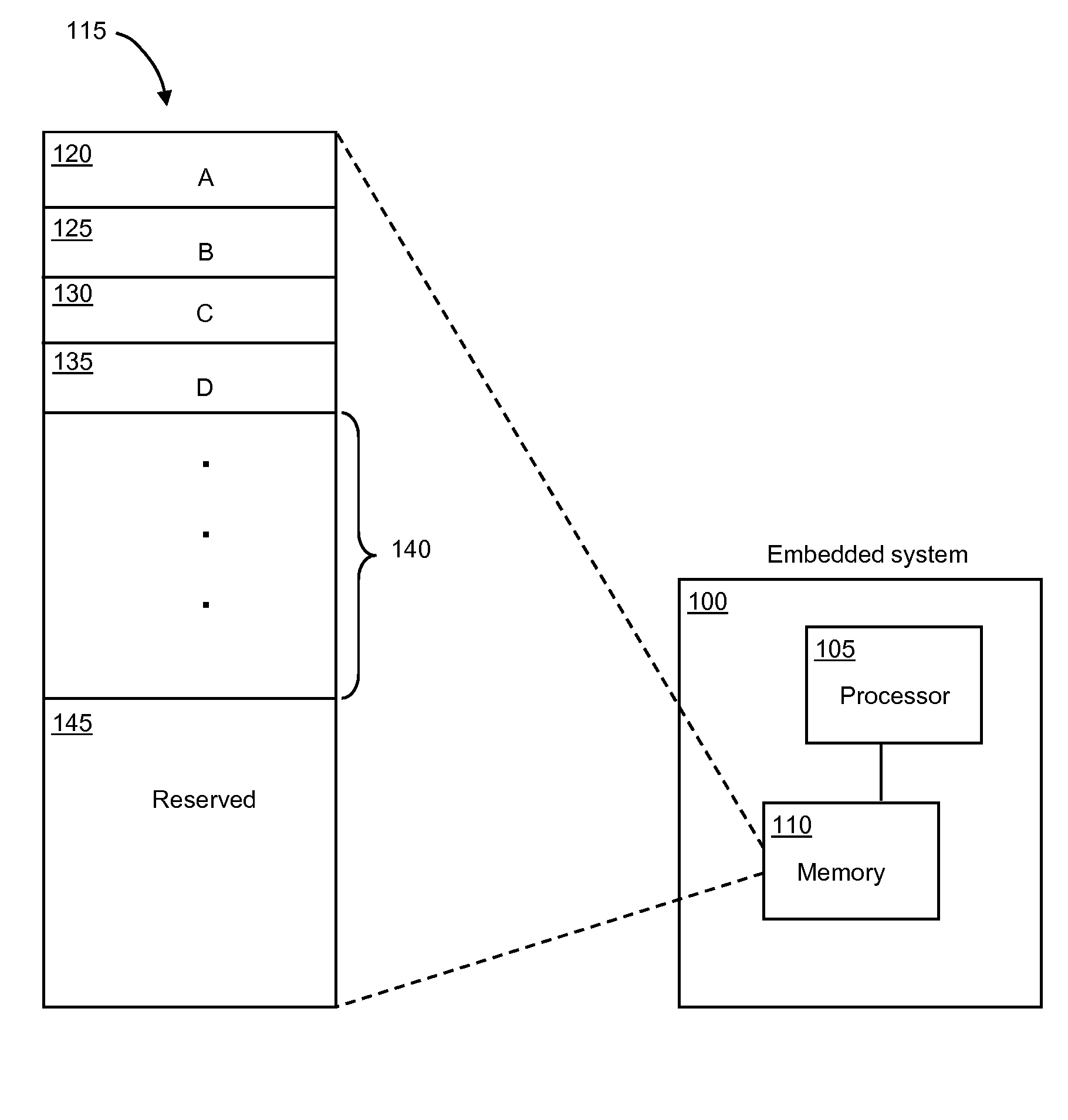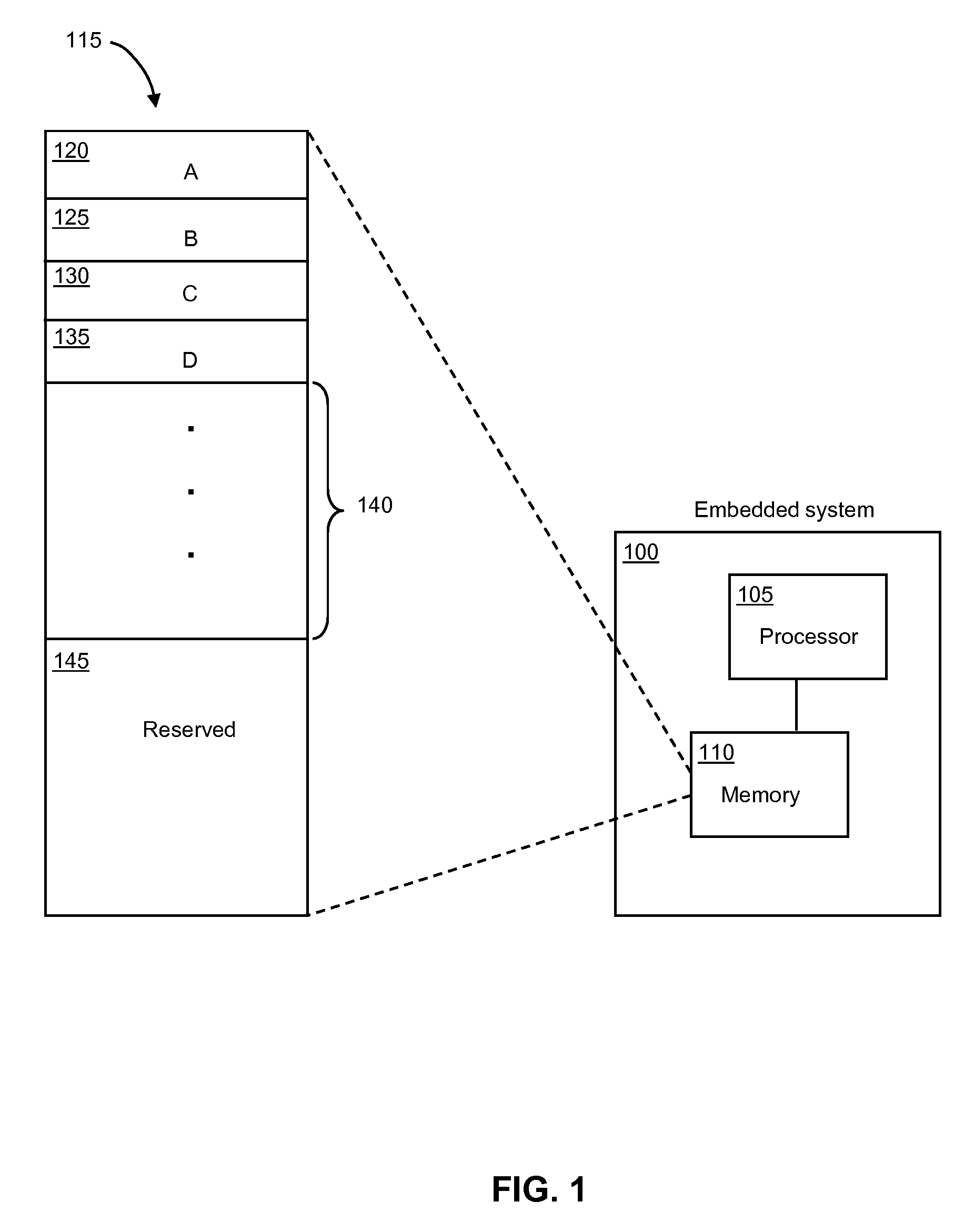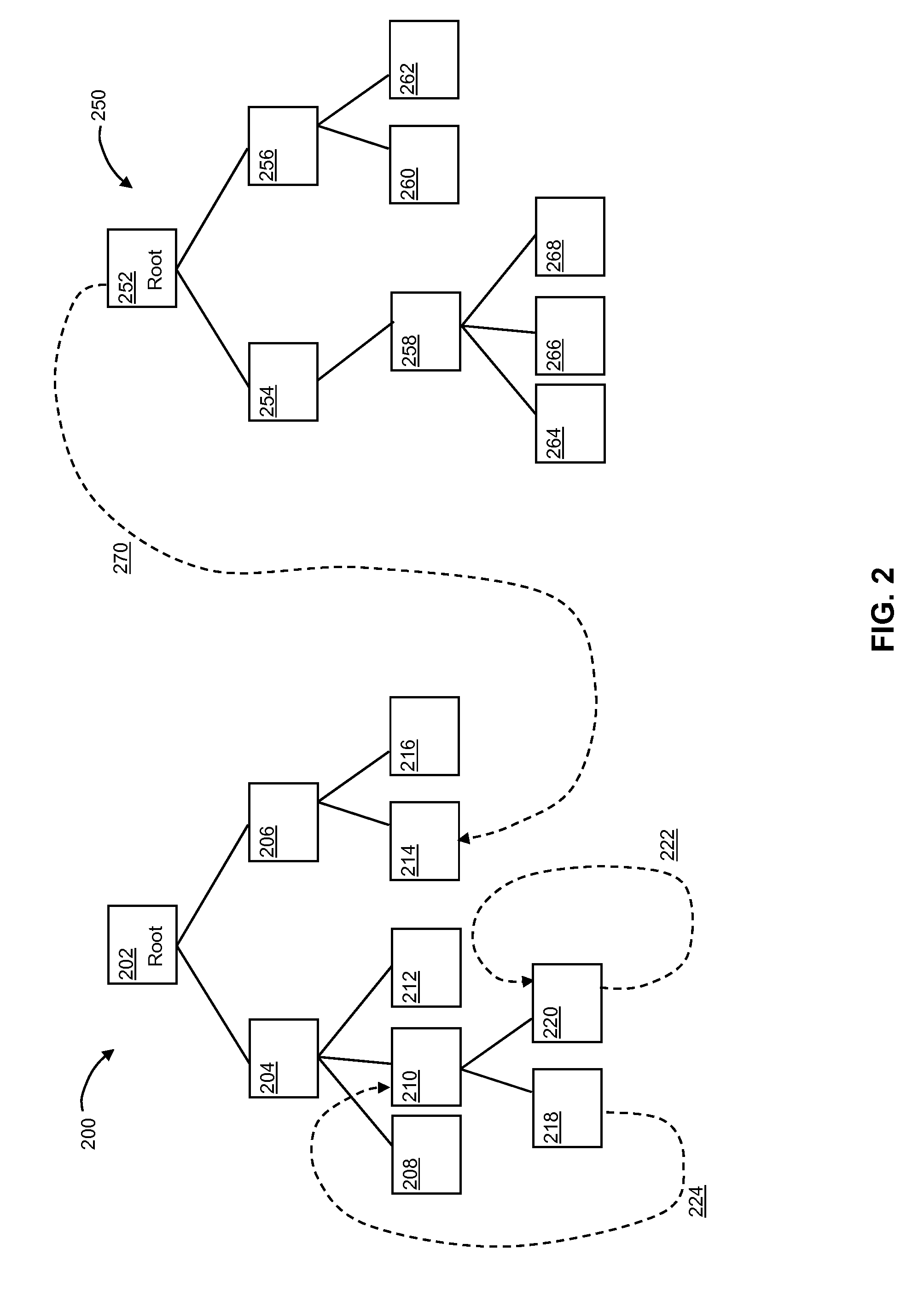Computation of stack usage in embedded computing systems
- Summary
- Abstract
- Description
- Claims
- Application Information
AI Technical Summary
Benefits of technology
Problems solved by technology
Method used
Image
Examples
Embodiment Construction
[0016]The following description is not to be taken in a limiting sense, but is made merely for the purpose of describing the general principles of exemplary embodiments. The scope of the invention should be determined with reference to the claims.
[0017]FIG. 1 depicts an exemplary embedded system implementing stack memory which has been allocated in accordance with various embodiments of the present invention. In particular, embedded system 100 includes processor 105 and associated memory 110. A portion of memory 110 includes stack 115. Various embodiments will be described in the context of stack memory utilized by an embedded device, but such descriptions apply equally to other systems including, for example, those set out with regard to FIG. 4.
[0018]Referring still to FIG. 1, an embedded system, such as system 100, is generally understood to function as a special-purpose computer system designed to perform a limited number of functions. It is usually embedded as part of a complete...
PUM
 Login to View More
Login to View More Abstract
Description
Claims
Application Information
 Login to View More
Login to View More - R&D
- Intellectual Property
- Life Sciences
- Materials
- Tech Scout
- Unparalleled Data Quality
- Higher Quality Content
- 60% Fewer Hallucinations
Browse by: Latest US Patents, China's latest patents, Technical Efficacy Thesaurus, Application Domain, Technology Topic, Popular Technical Reports.
© 2025 PatSnap. All rights reserved.Legal|Privacy policy|Modern Slavery Act Transparency Statement|Sitemap|About US| Contact US: help@patsnap.com



